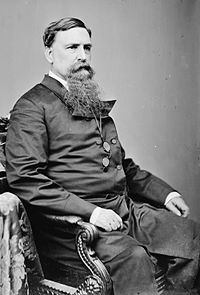Origins of the Know-Nothing Party in Baltimore, Maryland
The Know-Nothing Party gained traction in Baltimore as the population of immigrants grew during the 1850s, and immigrants competed with native-born Americans for jobs. In 1850, twenty percent of Baltimore's population were immigrants, and by 1854, immigrants made up about twenty-five percent of the total population. Historian Jean H. Baker argues that sixty percent of the state population were Methodists who often associated Catholicism with stereotypes of immoral behavior among immigrants,.
The Party's first meeting in Baltimore took place on August 18, 1853, with about 5,000 people in attendance. The party's central policies called for secularization of public schools, complete separation of church and state, freedom of speech, and regulating immigration. The first Know-Nothing candidate elected into office in Baltimore was Mayor Samuel Hinks in 1855.
Geography of politics in Maryland
In the 1850s, ethnic groups often separated themselves into "territories" that neither native born or immigrants dared to cross. The Lexington Market area was predominantly Democratic while Know-Nothings generally lived in the Federal Hill area in Baltimore By 1857 Know-Nothings dominated cities in eastern and western Maryland. The cities of St. Michaels and St. Fredericks, with larger immigrant populations, were heavily Know-Nothing, showing hostility between native-born and immigrants that lived in the same place. Areas which were predominantly Democrat were higher in Catholic and immigrant populations, such as Leonardtown.
1856 Election riots
September 12th riot
September 12, 1856, on the celebration of Baltimore's founding, local Know-Nothing associated gangs the Blood Tubs, the Wampanoags, and the Rip Raps raided a tavern and fired shots. Two people were killed, and around twenty were injured. This riot solidified Baltimore's reputation of lawlessness in nationwide newspaper coverage.
Municipal election riot on October 8th
The days leading up to the municipal election on October 8, were already marked by violence between the Democrats and Know-Nothings. A riot ensued on October 5, 1856, when Democrats tore down a Know-Nothing flag. The Democrats, trying to ward off the Know-Nothings, took cover in a nearby home and brandished a cannon. Police interfered, arresting several Democrats.
The next day, October 6, 1856, a shootout ensued after Know-Nothings provoked Democrats on Baltimore Street. Know-Nothings also sacked a tavern owned by Democrat Sam McElwee in the Centre Market area. Know-Nothings were about to raid the Democrat "Empire House" but were apprehended by police. Know-Nothings fled from the police towards Jones' Falls, ending in a fifteen-minute shootout on Holliday Street between the rival parties.
Election day October 8, 1856, was marked with violence in twenty city wards in Baltimore. Democrats incited a riot in the eighth ward, nicknamed "The Irish Eighth," when Democrats tried to drive Know-Nothings out of the eighth ward's polls, and a shootout occurred on Monument Street. Three Democrats were killed. The same day another riot took place when Know-Nothing affiliated Rip Raps plundered the Democratic New Market Fire Company firehouse in the Lexington Market Area. Two Know-Nothings died in the crossfire. Historian Tracy Matthew Melton argues that the widespread riots of the day signified the deadliest outburst of violence in Baltimore history at that point.
The partisans involved were overwhelmingly well-known fighting men with deep connections to the street violence of the fire companies. During the fighting at Lexington Market, Rip Raps specifically targeted the tavern owned by Petty Naff, the New Market's most notorious rowdy. Petty Naff was a target for Know-Nothing rivals as he led the New Market Fire Company. Naff was notorious in Baltimore for his history of conflict with the police, involvement in riots, assault charges, and his alleged connection to the murder of two men.
National and state election riot November 4th
National and state elections took place on November 4, 1856. Mayor Swann ordered the Maryland Light Division of Infantry to be on standby, but it was never put to action during the violence of that day, and Swann refused Governor Ligon's offering of military reinforcement. Tensions over whether or not the results of the election would be fairly polled resulted in election violence. In Baltimore's 6th ward, a mob fired a cannon at police. In the 2nd ward, Know-Nothings were thrown out of polling stations by Democrats, but Democrats were eventually curbed by Know-Nothings from the 4th ward who provided back-up. 67 people were injured and 17 died in the events of the riot. Know-Nothing Candidate for President Millard Fillmore was victorious in Baltimore, receiving 16,900 votes. Maryland was the only state in which Fillmore won votes in the electoral college.
Response and continued violence
Government response
In the aftermath of the 1856 election riots, charges were pressed against only two men involved. Charges were dropped against one man and the other man was acquitted. Historian Tracy Matthew Melton argues that local street gangs' affiliation with the Know-Nothing or the Democratic parties allowed them to commit acts of violence without consequences.
On December 1, 1856, a bill was presented to the City Council that would strengthen the police force. The new force, led by a Marshal, would consist of 397 men of the Mayor's choosing. All officers were to be given a fixed pay, a baton, a gun, and an official uniform. Baltimore would be separated into districts where police would surveil the streets at all times. The bill was approved by Mayor Swann on January 1, 1857, and went into effect March 1, 1857.
In the city elections of 1857, officials hoped to better prepare to control instances of election violence. Governor Thomas Ligon ordered George H. Steuart's militia of over 3,000 men because he felt that local authorities did not adequately respond to violence. Ligon was met with criticism by Mayor Swann, who argued that it was unconstitutional for the governor to order a militia without seeking permission first. Local officials ruled that Ligon did not have legal grounds to call a militia and did not provide enough evidence to support the need for one. Mayor Swann instead ordered 200 special policeman to support the existing force on election day. Additionally, Mayor Swann reinforced the existing police force, adding 105 men. The strengthened police force proved to be ineffective, as policemen did little to interfere during outbreaks of violence during election. To prevent violence at the polls, the city wards were redrawn and the number of polling stations increased, but the two parties would freely relocate the polls themselves. The Democratic Party in Baltimore asked voters to submit evidence of voter suppression by Know-Nothings.
Continued violence
Election violence and fraud in Baltimore continued in the following years despite efforts to stop it. In the 1857 gubernatorial election, riots were less common but voter suppression was employed by Know-Nothings. Know-Nothings would beat anyone who was not voting on a Know-Nothing Ballot, marked by a red stripe. Know-Nothing candidate Thomas Holliday Hicks was elected governor, and assured that he would "Never call on a militia the night before an election," like Governor Ligon did.
According to Frank Towers, in 1860, the Democrats took control of the state legislature and they acted forcefully in Baltimore. They took back the city police, the militia, patronage, and the electoral machinery, and prosecuted some Know-Nothings for electoral fraud. By 1861, the remnants of the Know-Nothing movement had split over secession and federal forces took control of Baltimore.<ref> Frank Towers, "Violence as a tool of party dominance: election riots and the Baltimore know-nothings, 1854-1860." Maryland Historical Magazine 93 (1998): 5-37.
In the broader context of racism in the United States, mass racial violence in the United States consists of ethnic conflicts and race riots, along with such events as:

The 1856 United States presidential election was the 18th quadrennial presidential election, held on Tuesday, November 4, 1856. In a three-way election, Democrat James Buchanan defeated Republican nominee John C. Frémont and Know Nothing nominee Millard Fillmore. The main issue was the expansion of slavery as facilitated by the Kansas–Nebraska Act of 1854. Buchanan defeated President Franklin Pierce at the 1856 Democratic National Convention for the nomination. Pierce had become widely unpopular in the North because of his support for the pro-slavery faction in the ongoing civil war in territorial Kansas, and Buchanan, a former Secretary of State, had avoided the divisive debates over the Kansas–Nebraska Act by being in Europe as the Ambassador to the United Kingdom.

The Philadelphia nativist riots were a series of riots that took place on May 6—8 and July 6—7, 1844, in Philadelphia, Pennsylvania, United States and the adjacent districts of Kensington and Southwark. The riots were a result of rising anti-Catholic sentiment at the growing population of Irish Catholic immigrants. The government brought in over a thousand militia—they confronted the nativist mobs and killed or wounded hundreds of anti-Catholic rioters.

William Poole, also known as Bill the Butcher, was the leader of the Washington Street Gang, which later became known as the Bowery Boys gang. He was a local leader of the Know Nothing political movement in mid-19th-century New York City.

Thomas Swann was an American lawyer and politician who also was President of the Baltimore and Ohio Railroad as it completed track to Wheeling and gained access to the Ohio River Valley. Initially a Know-Nothing, and later a Democrat, Swann served as the 19th Mayor of Baltimore (1856–1860), later as the 33rd Governor of Maryland (1866–1869), and subsequently as U.S. Representative ("Congressman") from Maryland's 3rd congressional district and then 4th congressional district (1869–1879), representing the Baltimore area.

The Plug Uglies were an American Nativist criminal street gang, sometimes referred to loosely as a political club, that operated in the west side of Baltimore, Maryland, from 1854 to 1865. The term plug ugly was used to identify an extremely tough ferocious fighter who could give a sound beating to an opponent, with the Plug Uglies' name additionally stemming from their practice of stuffing oversized plug hats with wool and leather, pulling them down over their ears for head protection as primitive helmets during the numerous street battles they participated in. The name Plug Uglies was used to refer to a number of criminal gangs in New York City as well as Philadelphia.

David Stewart was an attorney and politician from Baltimore, Maryland. A Democrat, he was most notable for his service in the Maryland Senate and his brief service as an interim U.S. Senator from 1849 to 1850.
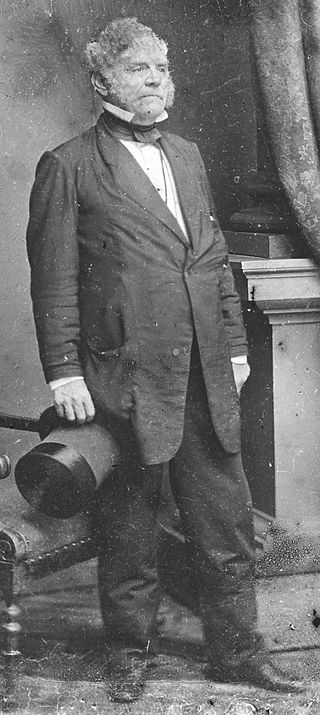
Thomas Holliday Hicks was a politician in the divided border-state of Maryland during the American Civil War. As governor, opposing the Democrats, his views accurately reflected the conflicting local loyalties. He was pro-slavery but anti-secession. Under pressure to call the General Assembly into special session, he held it in the pro-Union town of Frederick, where he was able to keep the state from seceding to join the Confederacy.
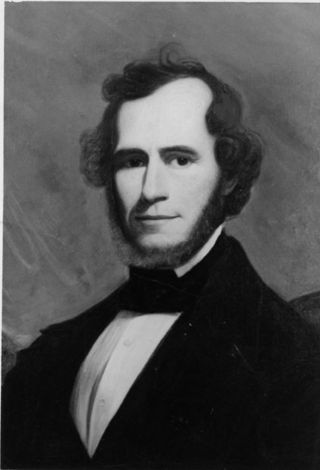
Thomas Watkins Ligon, a Democrat, was the 30th Governor of Maryland in the United States from 1854 to 1858. He was also a member of the United States House of Representatives, serving Maryland's third Congressional district from 1845 until 1849. He was the second Maryland governor born in Virginia and was a minority party governor, who faced bitter opposition from an openly hostile legislature.
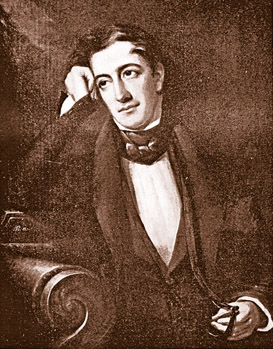
Lewis Charles Levin was an American politician, newspaper editor and anti-Catholic social activist. He was one of the founders of the American Party in 1842 and served as a member of the U. S. House of Representatives representing Pennsylvania's 1st congressional district from 1845 to 1851. Levin was the first Jewish U.S. Congressman, although David Levy Yulee served as a territorial representative from Florida prior to Levin's election to the House.
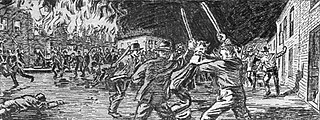
Bloody Monday was a series of riots on August 6, 1855, in Louisville, Kentucky, an election day, when Protestant mobs attacked Irish and German Catholic neighborhoods. These riots grew out of the bitter rivalry between the Democrats and the Nativist Know-Nothing Party. Multiple street fights raged, leaving twenty-two people dead, scores injured, and much property destroyed by fire. Five people were later indicted, but none were convicted, and the victims were not compensated.
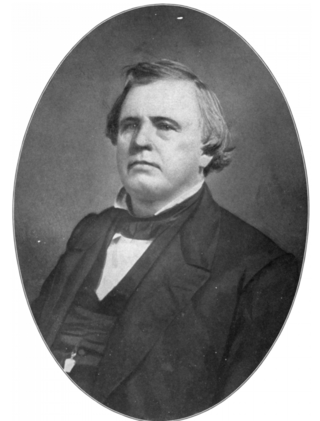
William Beans Magruder (1810–1869) was a prominent physician and the seventeenth Mayor of Washington City, District of Columbia, from 1856 to 1858.

The Know Nothings were a nativist political movement in the United States in the 1850s, officially known as the Native American Party before 1855, and afterwards simply the American Party. Members of the movement were required to say "I know nothing" whenever they were asked about its specifics by outsiders, providing the group with its colloquial name.
Henry Stump (1795–1865) served as Judge of the Criminal Court, 5th Judicial Circuit in Baltimore, Maryland, United States, from 1851 to 1860, one of the most lawless and politically violent decades in Baltimore history. He presided over the infamous trial of Plug-Ugly Henry Gambrill for the murder of a Baltimore police officer. In 1860, the Maryland General Assembly removed Stump from office for "misbehavior," the only jurist in Maryland history to be removed from the bench. Stump was also an eyewitness to the April 19, 1861 riots in Baltimore that marked the first bloodshed in the American Civil War.

George Hume Steuart (1790–1867) was a United States general who fought during the War of 1812, and later joined the Confederate States of America during the Civil War. His military career began in 1814 when, as a captain, he raised a company of Maryland volunteers, leading them at both the Battle of Bladensberg and the Battle of North Point, where he was wounded. After the war he rose to become major general and commander-in-chief of the First Light Division, Maryland Militia.
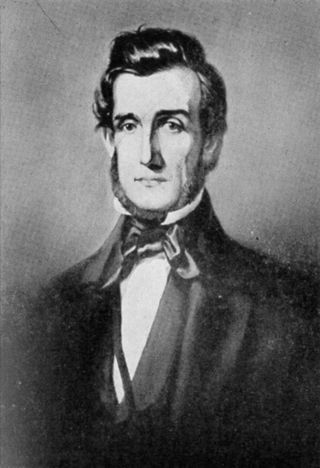
Samuel Hinks was Mayor of Baltimore, Maryland, from 1854 to 1856. He was a member of the Know Nothing party. He was succeeded in 1856 by fellow Know Nothing Thomas Swann.

The Cincinnati Riots of 1855 were clashes between "nativists" and German-Americans. The nativists supported J. D. Taylor, the mayoral candidate for the anti-immigrant American Party, also known as the Know-Nothing Party. During the riots, German-Americans erected barricades in the streets leading into their Over-the-Rhine neighborhood, and fired a cannon over the heads of a mob of nativists attacking them.

In the 1855 Chicago mayoral election, Know Nothing candidate Levi Boone defeated Democratic incumbent Isaac Lawrence Milliken by a 5.75% margin.

The term Know-Nothing Riot has been used to refer to a number of political uprisings of the Know Nothing Party in the United States of the mid-19th century. These anti-immigrant and anti-Catholic protests culminated into riots in Philadelphia in 1844; St. Louis in 1854, Cincinnati and Louisville in 1855; Baltimore in 1856; Washington, D.C., and New York City in 1857; and New Orleans in 1858.
